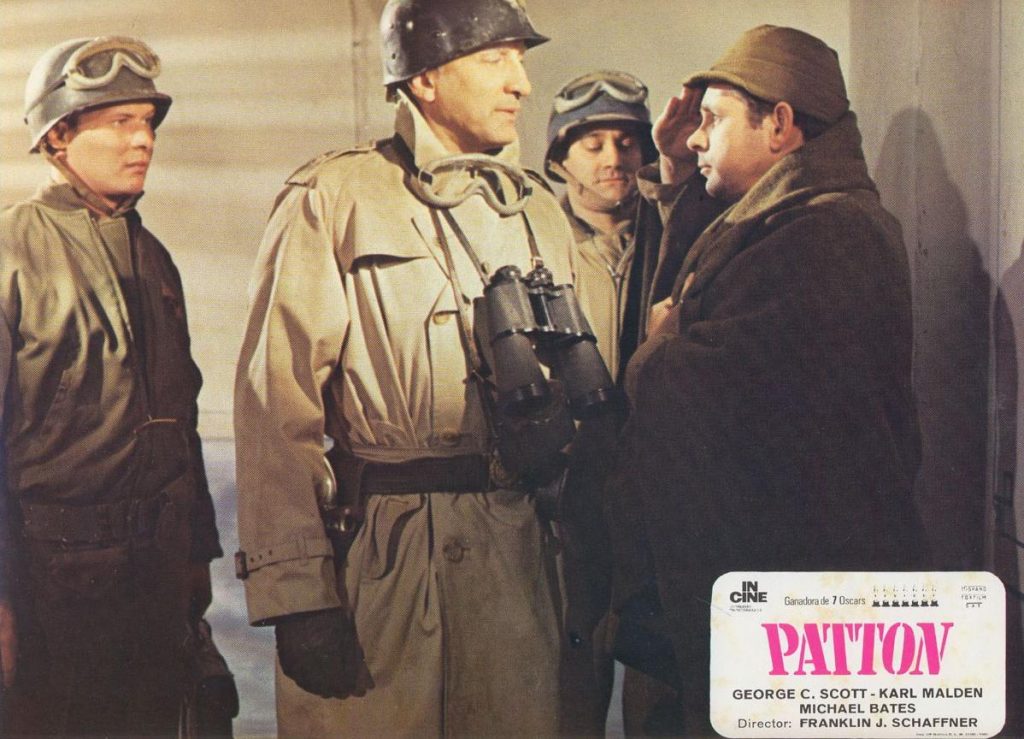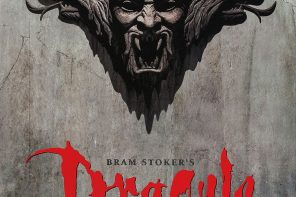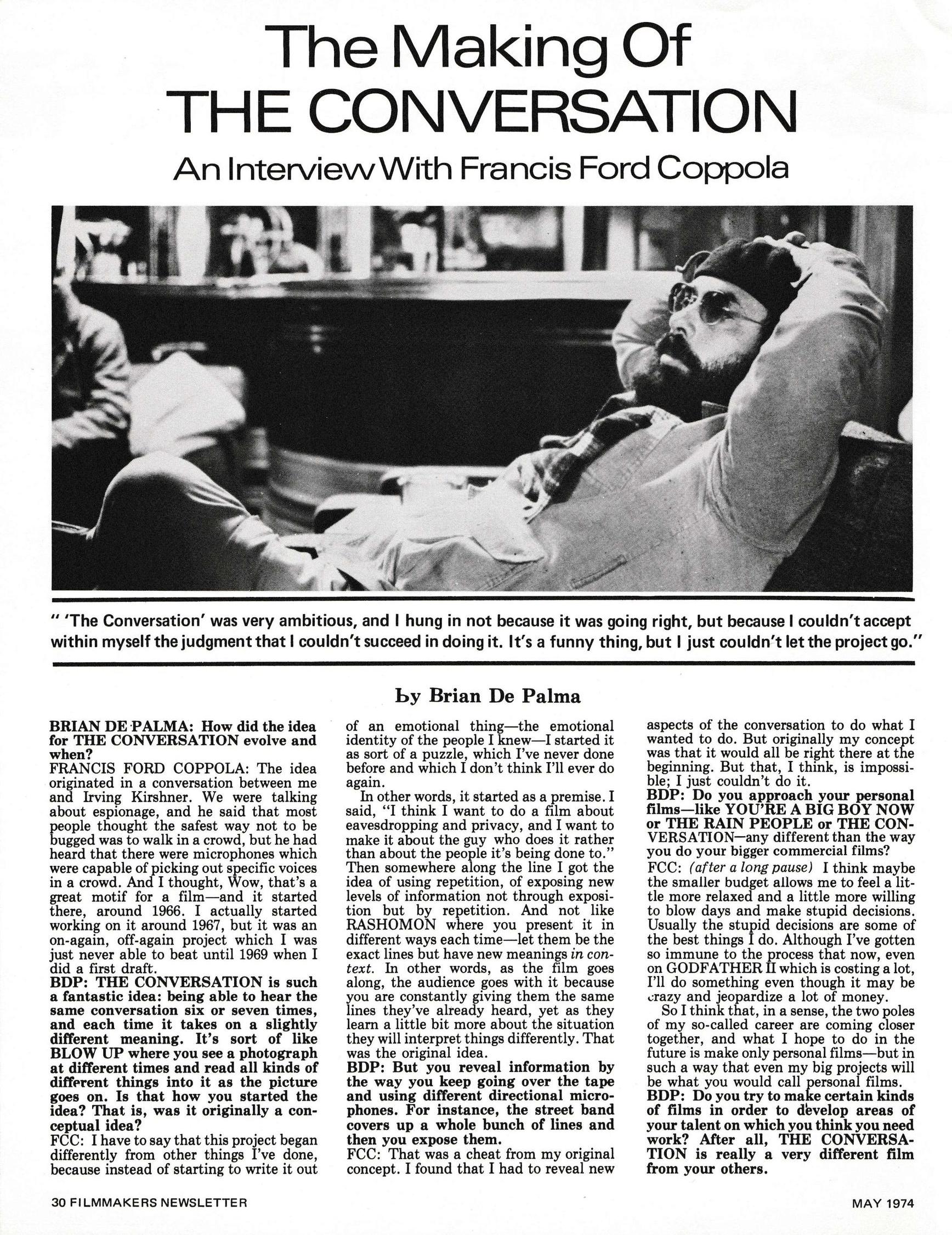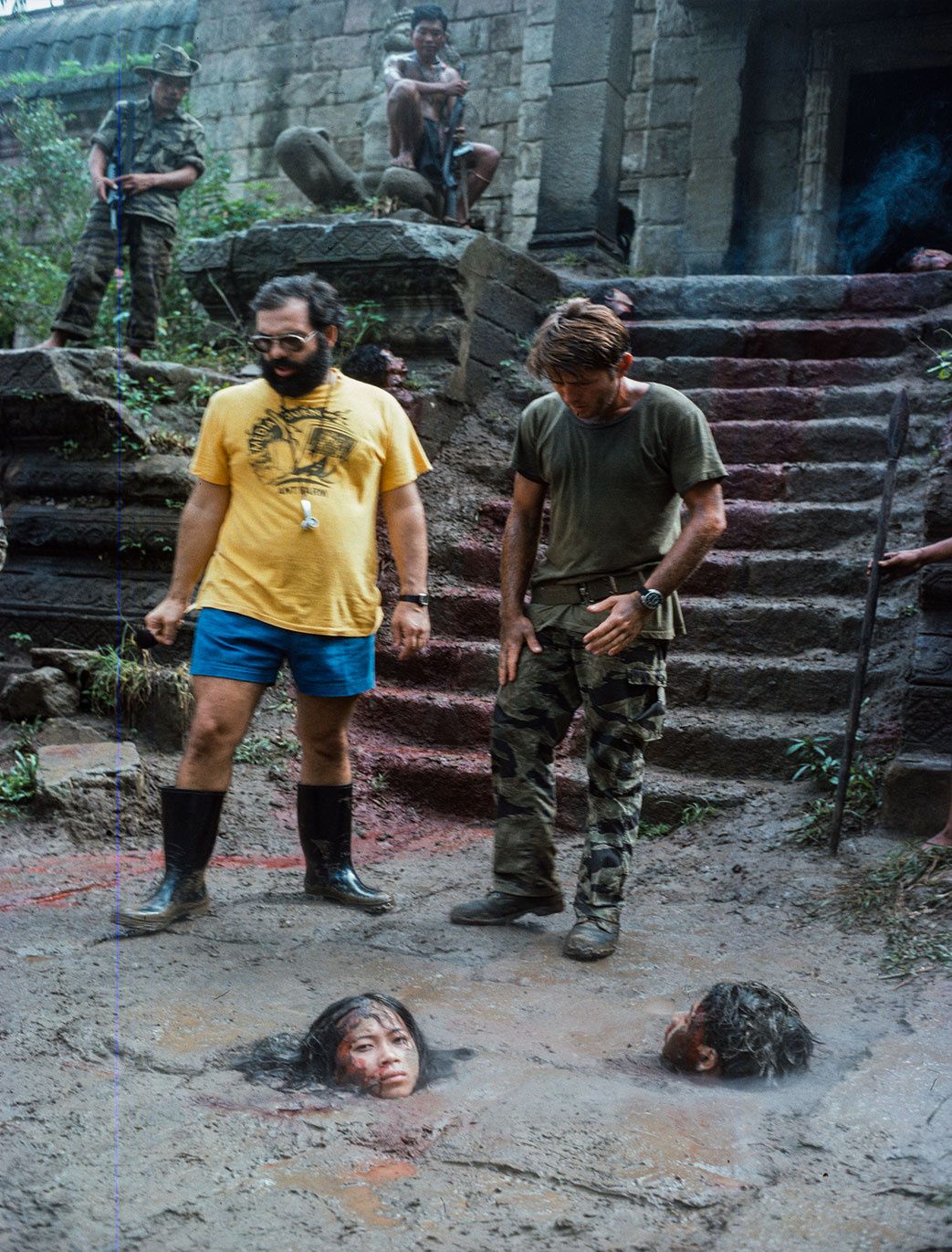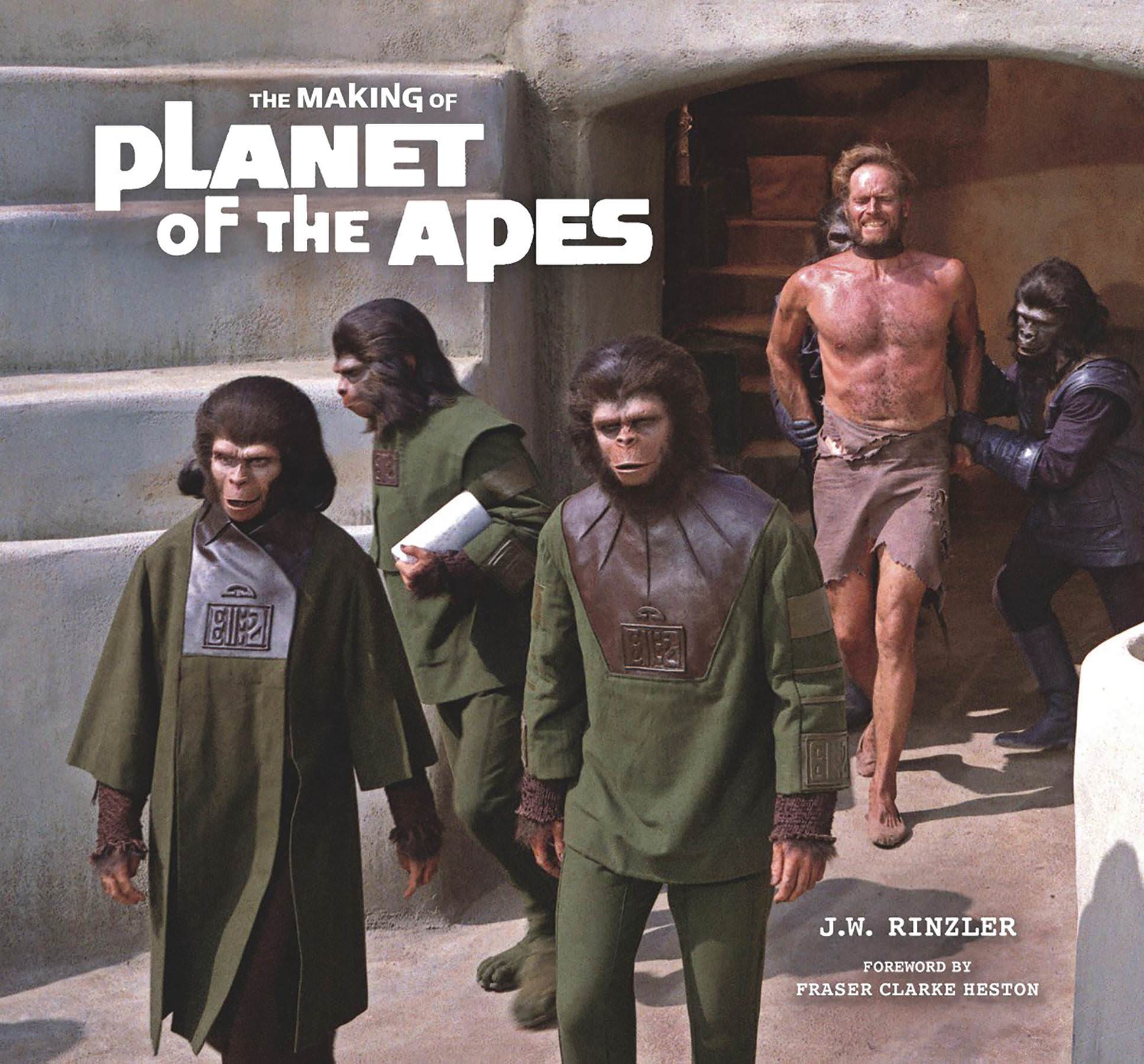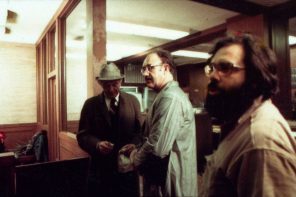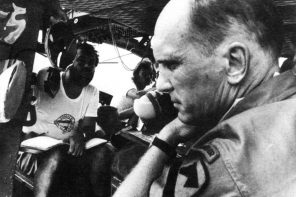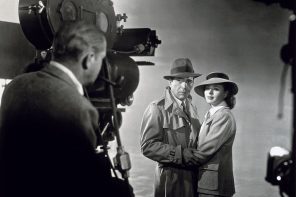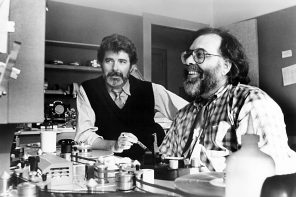By Sven Mikulec
As far as biographical films go, it’s difficult to find a more compelling picture than Franklin J. Schaffner’s Patton, a classic of American cinema, a jaw-dropping proof of lead actor George C. Scott’s range and power and solid evidence of Francis Ford Coppola’s versatility of craft. Coppola wrote the screenplay with Edmund H. North, mostly based on the biography Patton: Ordeal and Triumph by Ladislas Farago, as well as Omar Bradley’s memoir A Soldier’s Story. Since the producers failed to get a hold of Patton’s personal diaries, in order to make the film as authentic as possible General Bradley was hired as a consultant. His inputs must have helped carve out the magnificent, enigmatic and captivating persona that commands the screen—General Patton, if we’re to believe the authors, was one hell of a soldier, a natural leader, eccentric and flamboyant, a man who loved war and saw it as his only stage to shine on. His captivating personality chains you to the screen, not losing its grip for an instance, shedding light on a person definitely worth remembering.
It’s impossible, for instance, to forget the film’s powerful opening, when Patton gives a thrilling speech in front of a gigantic American flag, a cinematic moment often quoted and celebrated in the film-loving circles. Critically acclaimed composer Jerry Goldsmith provided a great score, Karl Malden chipped in a delightful performance, and the film went on to win no less than seven Academy Awards, including those for Best Picture, Best Original Screenplay, Best Lead Actor and Best Director. Patton is one of those priceless moments in the history of cinema when the circumstances allowed people of great talent, knowledge and passion to work together at the same moment in time: Schaffner, Coppola and Scott led the way to creating an epic biopic that stands proud and tall just as its titular character stood on the shores of Carthage.
Screenwriter must-read: Francis Ford Coppola & Edmund H. North’s screenplay for Patton [PDF]. (NOTE: For educational and research purposes only). The DVD/Blu-ray of the film is available at Amazon and other online retailers. Absolutely our highest recommendation.
 Loading...
Loading...
Francis Ford Coppola wrote the script for Patton, for which he won an Oscar, when he was 24 years old. Here’s some powerful knowledge—straight from the source.
FRANCIS FORD COPPOLA ON WRITING
When I wrote Patton, at the time I was about 24, and I only got the job because when they asked me if I had military experience I said yes, and I had gotten kicked out of military school, which was my experience. So Burt Lancaster was going to play the part at the time that I was actually there and they called me in for a meeting and they just lambasted the script I wrote because it had a lot of, it had this bizarre opening where he stands up in front of a big—theoretically his battalion of men and gives this speech and they criticize that because he was presented as a four-star general and with his Colt revolvers and those artifacts were all things he had gathered during the war. They thought it was misleading to start that way. And then they didn’t like the—there were a lot of sequences in the script of kind of reincarnation, where he talked about roaming through the Carthaginian battle and as though he had been there, and they thought the script was a little kind of metaphysical. At any rate, to long and the short, but mainly over the beginning they didn’t pick up my option and I went on and I didn’t even know that they weren’t going to use my script. What happened was for five years later they revisited it and they had hired George C. Scott and Scott didn’t like the script they then had, and someone remembered this earlier script. So they went back to my script and that’s how I got to be in it. So the moral I want to teach all the young people here is that the same thing you get fired for is what they give the Lifetime Achievement Awards 30 years later.
The question I wanted to ask is, actually, if you could talk about your writing process, your habit, sort of what’s a daily writing day like for you.
Well, the thing about writing is if you really try, if you do it every day, and you put in your time, you get better. I don’t know if there’s a—I think with acting that’s possible, too, but writing is something that if you really plug away at it, you can get better. The important thing is: A, choose the time that’s good for you. For me, it’s early morning because I wake up, and I’m fresh, and I sit in my place. I look out the window, and I have coffee, and no one’s gotten up yet or called me or hurt my feelings. It’s very important that your feelings are very, sort of, just stable. You know, you don’t want to have a heartache when you’re trying to go fly on some adventure of writing. At any rate, it’s very important for the young writer to, when you finish the six, seven, eight pages, to turn them over and don’t look at them again, because I believe there is a hormone that is injected in the blood of the young writer that makes him hate everything he has just written.
And so just don’t read it. And then when you finally have done it over the, you know, 30 days or how many days so that your stack of pages is in the 80s or something, then—and you feel you have it at some completion, then sit down and read it, and you’ll find that your reaction will be very different because you will have a little distance. And you realize that the first 10 pages that you would have just torn up and rewritten, which is to say never go back. If you don’t read it, you’re not going back and rewriting anything at first, because you don’t know yet. And maybe you’re just going to cut those 10 pages out, and they’re not even going to be in it. So you would have been rewriting something that’s not even in the piece. So give yourself that chance to put together the, you know, 80, 90 pages of a draft and then read it very, at a—you know, in a nice little ceremony, where you’re comfortable, and you read it and make good notes on it, what you liked, what touched you, what moved you, what’s a possible way, and then you go about on a rewrite. And I’ll rewrite a script a trillion times. So rewriting is just the middle name of writing. —Francis Ford Coppola
Filmed by 20th Century-Fox in Dimension 150 at a cost of over five million pounds, Patton is not only superior screen entertainment but is also an exceptionally well-made picture. This was due primarily to the talented people producer Frank McCarthy brought together for the production. For example, there is an unforgettable performance by George C. Scott as Patton; powerful and incisive direction by Franklin J. Schaffner; a definitive screenplay by Francis Ford Coppola and Edmund H. North; an inspiring music score by Jerry Goldsmith that makes use of an old Army fife and drum tune at the leitmotif; and superb photographic imagery by Director of Photography Fred J. Koenekamp, ASC. Patton opens with a prologue before the titles appear. The screen is filled with a giant American flag painted on a background. From the bottom of the frame, a tiny figure emerges and strides purposefully forward until we see the full figure of Patton, resplendent in polished helmet liner and an immaculate, bemedalled battle jacket. There is the brace of ivory-handled pistols that was a Patton trademark.
And the confident belligerence that Patton projected. Scott’s performance in this scene sets the right note for the picture. What follows is an acting tour de force. But one is not conscious that this is just a performance. Instead, one feels that it is real. Scott is Patton. This is acting of the highest order. Fred Koenekamp is enthusiastic about this powerful opening scene and explains how it was filmed: ‘This was an approximately five-minute speech. We shot it in one afternoon in the Sevilla Studios in Madrid. The flag was painted on the back of the stage wall with curtains hung on the sides. It was as big as it looked on the screen—enormous. Scott did this scene perhaps six or eight times for various reasons, either close-ups or something else, and he never fluffed his lines once. Never once! In fact I can’t remember him once during the picture fluffing because he didn’t remember a line or got confused. He was always right there on the ball just as professional as it was possible to be.” —The Photography of Patton
Photographed by Federico G. Grau, Claudio Gómez Grau © Twentieth Century Fox. Intended for editorial use only. All material for educational and noncommercial purposes only.
If you find Cinephilia & Beyond useful and inspiring, please consider making a small donation. Your generosity preserves film knowledge for future generations. To donate, please visit our donation page, or click on the icon below:
Get Cinephilia & Beyond in your inbox by signing in
[newsletter]


